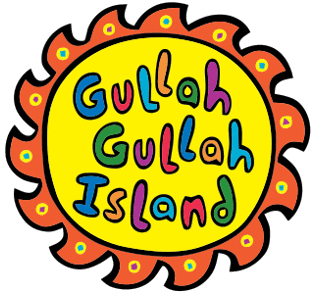Let’s All Go to Gullah Gullah Island

Promotional photo for Gullah Gullah Island
In Oct. of 1994, children all across the United States had the opportunity to venture out to a magical island full of fun, music, and bright sunny weather without ever needing to leave the comfort of their living room couch.
At the time, children’s programming had grown popular throughout the country. Now, kids throughout America were no longer waiting on Saturday mornings to catch up on their most beloved programs. There was an influx of programs being made available at any time throughout the week.
In a world of giant purple dinosaurs and alphabet-singing monsters, Gullah Gullah Island coasted its way onto the Nick Jr programming block of the Nickelodeon television network.
The series was developed and hosted by Ron and Natalie Daise, a married duo who met one warm Sunday afternoon during a church service and never looked back. Their passion for music and art would soon transform into careers in entertainment and education.
Ron Daise grew up on St. Helena Island, one of the many Sea Islands spotting the South Carolina coast. Growing up, Daise’s Geechee culture was a source of tension in his life. He resented it and feared that his dialect and origins might impact his ability to be successful.
Eventually, Daise would grow to embrace this culture. He released his first novel, Reminiscences of Sea Island Heritage, in 1986. The novel captured the history, folklore, and culture of St. Helena Island— it would also be one of the first steps that would eventually lead to the premier of Gullah Gullah Island.
The pair would begin a cultural awareness series titled ‘Sea Island Montage,’ a show aimed at educating through songs, dances, and skits about Gullah Geechee culture.
Eventually, this act began to gain attention and would eventually lead to Nickelodeon headquarters, where the Daise’s would pitch Gullah Gullah Island and fastly begin developing the children’s television series.
The series was a thirty-minute program that would take place on the fictionalized Gullah Gullah Island and featured a bright speckled pollywog named Binyah Binyah (the Gullah word for an Island Native.) Each episode would focus on elements of conflict management, family, and education while weaving in elements of West African history and culture.
My older sister, who’d been able to catch the show upon its original premiere, recalls being transfixed with the series. Her favorite element of the series was the idea that everyone was welcome to come visit the perfectly sunny island.
My siblings and I would gather around our one tv to watch episodes of the series together, not knowing that the fictionalized island was based on one within driving range of our family home. We also didn’t know that we were inadvertently learning about the history of our own ancestry— which is rooted in the Sea Islands.
The stigma surrounding Gullah Geechee culture has led to many people not passing on the traditions, food, and history to their children with the hopes of disconnecting them from these roots. Gullah Gullah Island was a beacon of light, pulling us home and filling our minds with a history that is yearning to be spread.
These islands, its people, and its stories are crucial to American history. So, in a world of giant purple dinosaurs and alphabet-singing monsters, why not take a trip over to Gullah Gullah Island?




